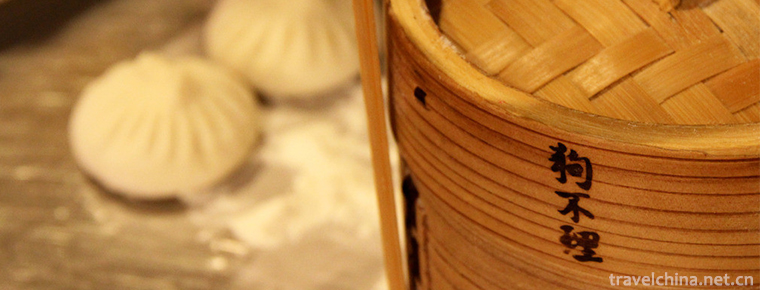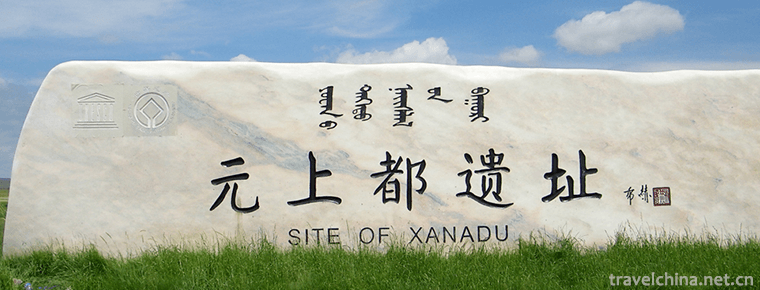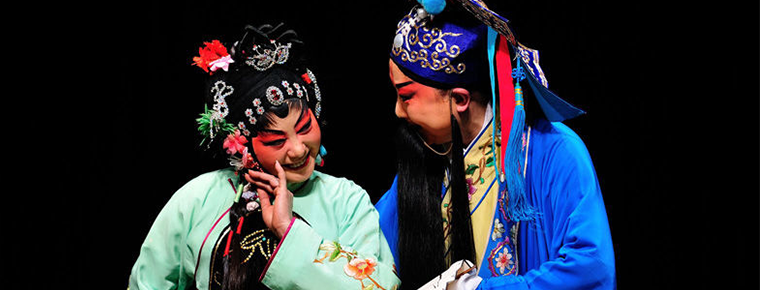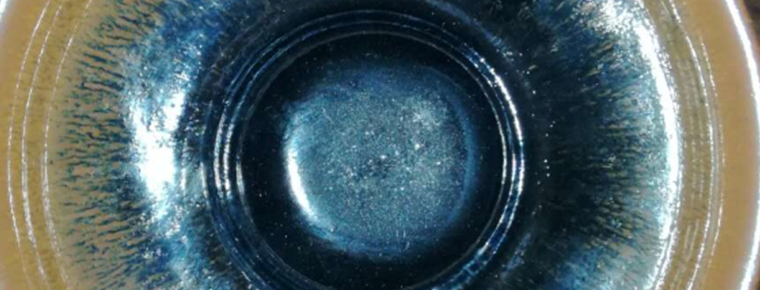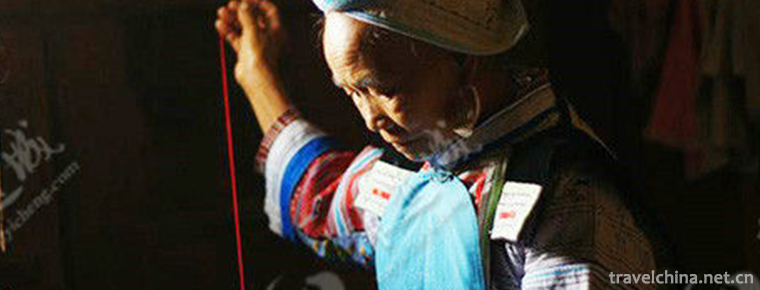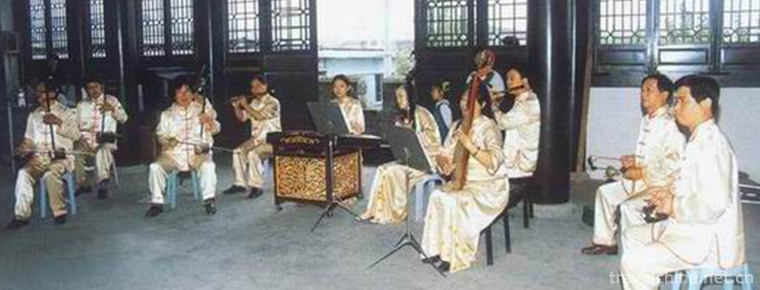Siming Nanci
Siming Nanci
Siming Southern Ci is also called "Siming Documents". A kind of traditional local folk art in Zhejiang Province. Tanci, spoken and sung in Ningbo dialect. It is popular in Ningbo, Zhejiang Province. Originally amateur singing for literati, professional artists appeared in the late Qing Dynasty. In the early stage, it was singing according to the roles of Sheng, Dan, Jing and Ultimate. Later, it developed into singing on three strings by one person, accompanying on the dulcimer by one person, accompanied by Pipa and erhu by two or three people. The lyrics are seven-character sentences. Traditional bibliographies are full-length, including Pearl Tower, Jade Dragonfly and Double Hair Cutting. It used to be called Ningbo Document. Taozhen of Song Dynasty and Zhejiang Opera of Ming Dynasty evolved from Tanci, spread to Ningbo city and suburban counties. From the late Qing Dynasty to the early Republic of China, it reached its peak and began to decline in the 1940s. It is now on the verge of extinction.
On June 7, 2008, the "Siming Nanci" declared by Ningbo City, Zhejiang Province, was listed in the second batch of national intangible cultural heritage list with the approval of the State Council.
historical origin
Siming Southern Ci, commonly known as Ningbo Documents, belongs to Tanci. Because of the magnificent chapter and elegant tune, Siming Nan Ci is appreciated by scholars and officials. Generally, it does not enter bookstores or tea shops. It is often sung in the halls of birthday and festivity. According to the legend of the old artists, Emperor Qianlong of the Qing Dynasty visited Ningbo when he went down to the south of the Yangtze River and lived in the Zhangzhuang Yuan family of Baiyi Temple. After listening to Ningbo documents, I appreciated them very much and said, "This is a word, not a book." Hence, Ningbo documents were changed into Siming Nanci. There are also legends: when Qianlong returned to Beijing, he called a group of Southern Ci artists to sing in the palace, and he learned it himself. These legends are quite popular among old artists, but they are not recorded in Ningbo Chronicles.
Siming Southern Ci has been tested for more than 300 years.
At the end of Ming Dynasty and the beginning of Qing Dynasty, a group of like-minded scholars organized similar "Poetry and Song Fu Society" and "Silk and Bamboo Society" to study the tunes and programs of Nanci. During the Daoguang period, Southern Ci was very prosperous. There were organizations such as "Chongde Society" and "Yinfeng Xuan" in the area of New Street of Ningbo City, together with artists engaged in Southern Ci singing in suburbs, Zhenhai and Fenghua, totaling more than 280 people. Later it gradually declined, and on the eve of liberation, only twenty or thirty people remained. More famous are Teng Yunqing, Chen Shiqing, Dai Shanbao, Chen Jinen, He Guizhang, Chai Bingzhang, Chen Lianqing, etc. Tang Xinsen, a calligrapher in Jiaochuan, Zhenhai, and Gao Ligang's father also sang Nanci. So there are many melodies of Nanci in Jiaochuan's walking books. Xu Fengxian and Jinyulan, famous Yong opera artists, have also learned Southern Ci.
Southern Ci Artists'Club mostly gathered on June 11 and November 11 (lunar calendar) for two days. In the hall, there were nine statues of Gong Zhou, Confucius, Tang Ming Huang, Li Bai and Li Guinian, which were worshipped with incense. They also worshipped Lei Haiqing, a musician of the Tang Dynasty. According to legend, Lei was a blind man who was captured by Mount Anlu during the Anshi Rebellion. Thunder held Pipa in his hand and scolded Mount Anlu. Finally, he smashed the Pipa on Mount Anlu. Southern Ci artists admire his integrity very much.
In 1958, the former Ningbo Quyi Troupe established the Siming Southern Ci Performance Team, which was later aborted by the Cultural Revolution. In the 1980s, famous old artists gave exhibition performances. In 2000, it was organized by Ningbo Mass Art Museum to perform in a reformed opening form (for amateur groups, the singing form has changed). The Southern Ci of the Fourth Ming Dynasty is spoken and sung in Ningbo local language, mainly by singing. The singers sing by themselves, paying attention to the level rhythm of the lyrics. The tunes are divided into "upper, middle and lower rhymes" and "fu tunes" and "ci tunes" are the basic tunes. Their singing tunes have great influence on Yongju and Ningbo walking books.
In 1959, Ningbo established the Opera School (Quyi Class), which recruited and trained two groups of students of Siming Nanci. Chen Xiangyuan, then 13, was the first group of students to be admitted to the Quyi Class. He studied singing, Yangqin and Pipa as well as Chai binzhang and Yu changshou, famous Southern Ci artists. After graduation in 1964, Chen Xiangyuan entered Ningbo Quyi Troupe, mainly engaged in Yangqin accompaniment.
During the ten-year "Cultural Revolution" catastrophe, Siming Nanci suffered the same devastating destruction as other folk arts. The precious materials and scripts were burned down. The city folk art troupe was dissolved, and most of the Southern Ci artists were forced to change their professions. In 1979, Ningbo Restoration Quyi Troupe, Siming Southern Ci ushered in vitality again. Around 1980, Li Chenglong, Chen Xueyun and Chen Xiangyuan often went to performances around the country. "Siming Nan Ci was very popular with the audience at that time. We not only performed in urban and rural areas of Ningbo, but also in Zhoushan, Taizhou, Huangyan and other places. The bibliographies of the performances were He Wenxiu, Xue Zao Tu, Wu Bisong and so on. Almost all the performances were full and one ticket was hard to get."
However, with the rise of TV programs and popular music, the audience of Siming Nan Ci is constantly losing. In 1982, the Municipal Quyi Troupe was dissolved, and many artists went to different places. In the next 20 years, it seems that there is no chance for Siming Nanci to be formally presented on the stage. The flower of folk art is gradually withering. The melodious and elegant folk tune that Ningbo people used to know is fading away with the passage of time and gradually fades out of people's memory.
Inheritance and Protection
Since the 1940s, the Southern Ci of the Four Mings Dynasty has gradually declined. The main reasons are as follows:
1. Words and sentences are not popular enough. Most of them are in the language of words and songs. They are not popular spoken language, and the audience is narrow.
2. Bibliography should not bring forth new ideas from the old. After the founding of the People's Republic of China, the playwrights used to attach more importance to drama than to opera. They often neglected the arrangement and reform of Southern Ci. They were interested in it, but they only found some materials that could be adapted to the opera. If, like Yong Opera, a group of popular books, such as Half Scissors, Double Jade Cicadas and Rainy Niang Wan Marry, can be reorganized and adapted, the current situation of Siming Nan Ci may be improved.
3. Old age withered, followed by a lack of people.
On March 20, 2008, after the publication of the second batch of national intangible cultural heritage (quyi), Ningbo Siming Nanci appeared in the TV program "Very Opera", co-sponsored by Shanghai Wenguang News Media Group and Xinmin Evening News, and created by Oriental Satellite TV and New Entertainment. It was performed by Ningbo Yong Playwright Wang Jinwen and renowned singer Zhou Yanhong. The program will be presented on Oriental Satellite TV 3. It was broadcast at 7.30 p.m. on 22 February. Since the launch of Oriental Satellite TV, the column "Very Opera" has received wide attention and praise. More than 60 stars from three places across the Straits and overseas participated in the competition. The second season of Very Drama was launched in an all-round way. The theme of the second season was "a journey to find roots", aiming at the "intangible cultural heritage" of our country. In the form of "experiential reality show", we traveled to various places to explore the art of opera, especially those endangered operas, art and cultural memories. The program invited celebrities such as Zhou Yanhong, Yang Kun, Soybean and Zhao Zhigang to 24 regions as cultural visitors to complete the mission. Zhou Yanhong visited Siming Nanci, which originated in Ningbo and is known as "the wonderful flower of Ningbo local folk art".
The column group of Very Opera invites Yong Opera master Wang Jinwen and singer Zhou Yanhong to join hands in singing Siming Nan Ci. Wang Jinwen, who finished recording the program Huiyong in Shanghai, said in an interview: "Siming Nanci belongs to the national intangible cultural heritage. It is incumbent on me to attend such an event, which can not only publicize the protection of intangible cultural heritage to the public, but also spread the influence of Ningbo."
For Wang Jinwen, Siming Nanci is a piece of cake, but Zhou Yanhong, who has never touched Ningbo dialect, feels challenged. "Apart from singing in a different way from the songs I usually sing, the biggest difficulty comes from the dialect in the lyrics," she said. She printed out the words and songs and marked the pronunciation of the speech. She worked hard and practised hard. Finally, her efforts were not in vain. After listening to her live singing, Wang Jinwen praised her: "It's very good." It is believed that at 7:30 p.m. on March 22, Ningbo audiences will enjoy a wonderful program on Oriental Satellite TV.
In 2003, the state launched the project of rescuing and protecting folk cultural heritage. We can't let Siming Southern Ci, which once had a brilliant style, become a singer! In order to rescue and protect Siming Nanci, which is an endangered species of music, Chen Xiangyuan organized colleagues of Quyi Class, such as Li Chenglong, Qian Yuanming and Chen Xueyun, to collect precious information about Siming Nanci. Since 2002, they have compiled and published a number of books, such as Selected Works of Traditional Quyi in Ningbo, Simingnan Ci Volume, Zhejiang Non-material Cultural Heritage Representatives Series, Simingnan Ci, etc. They have compiled and collected a number of mimeographs, manuscripts, classical records, tapes and records, and sorted out Pearl Tower, Shuangzhufeng, Jade Dragonfly, He Wenxiu, Rain Pavilion, etc. Wait for a number of classical bibliographies of Siming Nan Ci. Chen Xiangyuan's wife Chen Xueyun has done a lot of assistant work in this process. For example, in sorting out the bibliography of He Wenxiu, it was found that several books were missing. Chen Xueyun, with superhuman memory, recorded these books word by word, so that the book could be completely preserved. In 2006, six veteran artists, Chen Xiangyuan, Li Chenglong, Chen Xueyun, Qian Yuanming, Chen Zulei and Ding Dewei, spontaneously formed a performance group of Siming Nan Ci, and they performed Siming Nan Ci in various literary and artistic activities whenever they had the opportunity. With their efforts, people heard the long-lost Siming Nan Ci. In 2008, Siming Nan Ci was selected into the second batch of national intangible cultural heritage list. The protection and inheritance of Siming Nan Ci has received the support and attention of the government and all walks of life.
Since 2008, Siming Nan Ci has been selected into the second batch of national intangible cultural heritage list (Quyi category). The publicity period has ended and it is being submitted to the State Council for examination. Siming Southern Ci, commonly known as Ningbo Documents, belongs to Tanci. The Southern Ci of the Four Ming Dynasty originated in the late Ming and early Qing Dynasties and has a history of about 300 years. Because of the magnificent chapter and elegant tune, Simingnan Ci is appreciated by scholars and officials. Generally, it does not enter bookstores or tea shops, but sings in the halls of birthday and festivity. According to the old artists, Emperor Qianlong of the Qing Dynasty visited Ningbo in the south of the Yangtze River and lived in the Zhangzhuangyuan family of Baiyi Temple. After listening to Ningbo documents, Qianlong admired them very much. He said, "This is a word, not a book." Therefore, "Ningbo documents" were replaced by Siming Nan Ci.
The main bibliographies of Siming Nanci include Pearl Tower, etc. Many tunes of Siming Southern Ci are absorbed and melted by Yong Opera, Ningbo Walking Book and Jiaochuan Walking Book.
With the development of the times, the once brilliant Southern Ci of the Four Mings Dynasty is facing a serious crisis of extinction. For various reasons, the original performers of Siming Nan Ci changed their careers one after another, and there were few successors. The few remaining old artists were all over the age of the ancients. It is urgent to rescue Siming Nan Ci.
The Municipal Culture, Radio, Television, Press and Publishing Bureau and Municipal Literature Federation have carried out a series of rescue work on Siming Nanci and other local folk music: they have set up an integrated music editorial committee, compiled and published books and materials, introduced the historical origin, repertoire, music, institutions and characters of Siming Nanci, and established a Ningbo Quyi Expert Committee to demonstrate and study the protection of Siming Nanci. We should build up a perfect archive of folk culture and art, find out the living and physical condition of the old artists, and do a good job in art rescue.
In order to further protect Siming Nanci, a leading group on rescue and protection of Siming Nanci was established under the guidance of experts, and a five-year protection plan was formulated. According to the plan, we will continue to make a special survey on Siming Nan Ci, including characters, historical materials, music and videos. We will master the information of all Siming Nan Ci artists, confirm and name several successors of Siming Nan Ci, so as to ensure the smooth progress of the inheritance work. We will set up a demonstrative team of Siming Nan Ci, set up a base for inheritance and rehearse representative bibliographies, and launch a series of knowledge and appreciation of Siming Nan Ci. Lectures, school activities and TV art films of Siming Nan Ci were held, theoretical research on Siming Nan Ci was carried out in depth, and a complete database of Siming Nan Ci was established.
However, due to the loss of Siming Nan Ci artists and the long abandonment of performing arts, only Chen Xiangyuan, Chen Xueyun, Li Chenglong, Qian Yuanming and Ding Dewei are the old artists who can skillfully interpret Siming Nan Ci in Ningbo.
In 2011, as the protection unit and inheritance base of Siming Nan Ci, Haishu District Cultural Museum opened a non-legacy lecture class for the citizens of Siming Nan Ci, popularizing and promoting the history and culture of Siming Nan Ci. This class attracts a group of citizens who are interested in Siming Nan Ci. In that year, Chen Xiangyuan and Chen Xueyun recruited three disciples who were determined to learn Siming Nan Ci: retired worker Tang Yaqin, young individual household Huang Min and primary school student Shao Pinyue. Less than two years later, under the leadership of Chen Xueyun, they performed in the folk music theatre and on the TV station. People vaguely see the hope of the inheritance of Siming Nan Ci.

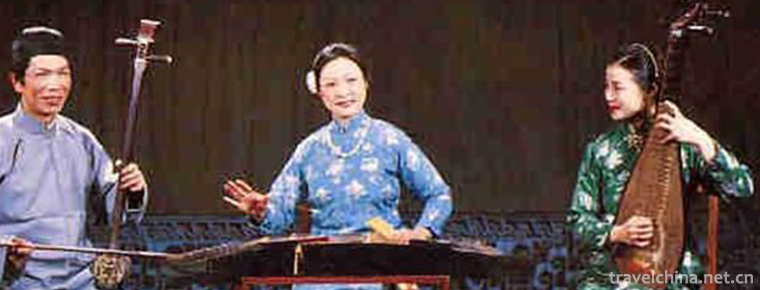
-
Wu zhen ancient town
Wuzhen, located in Tongxiang, Jiaxing City, Zhejiang Province, is located in the "Golden Triangle" of Jiangsu, Zhejiang and Shanghai.
Views: 189 Time 2018-11-11 -
Go BelieveGoubuli baozi
Goubuli steamed bun is a snack made of flour, pork and other materials. It was founded in 1858 (Xianfeng period of the Qing Dynasty). .
Views: 162 Time 2018-11-14 -
Wenchuan Special Tourist Area
Wenchuan Special Tourist Area is a memorial and cultural theme scenic area specially developed after the reconstruction of the Wenchuan Earthquake on May 12, 2008.
Views: 206 Time 2018-12-12 -
Wulian Mountain Scenic Area
Wulian Mountain Scenic Area covers a total area of 68 square kilometers and is a national AAAA-level tourist area. It is composed of Wulian Mountain and Jiuxian Mountain.
Views: 152 Time 2018-12-22 -
Wanjiazhai Water Conservancy Scenic Area of the Yellow River
Wanjiazhai Water Conservancy Project is located in the canyon of the north main stream of the Yellow River from Toketo to Longkou. It is the first of eight cascades planned and developed in the middle.
Views: 230 Time 2019-01-18 -
Shui Dong gou
The Shuidonggou scenic spot in Ningxia is the earliest Paleolithic cultural site excavated in China. It is known as the birthplace of Chinese Prehistoric Archaeology.
Views: 144 Time 2019-02-08 -
Sichuan Opera
Sichuan Opera, commonly known as Sichuan Opera, is mainly popular in the Han nationality areas of Sichuan, Chongqing, Yunnan and Guizhou provinces in southwestern China.
Views: 181 Time 2019-04-19 -
Burning Technology of Building Kiln and Building Calendula
Kiln building Calendula firing technology, the local traditional skills of Nanping City, Fujian Province, one of the national intangible cultural heritage..
Views: 288 Time 2019-05-05 -
Miao embroidery
Miao embroidery refers to the embroidery skills inherited by the Miao people in China. Miao embroidery in Leishan County, Guiyang City and Jianhe County of Guizhou Province has different forms and sty.
Views: 137 Time 2019-06-05 -
Shaoxing Ci Tone
Shaoxing Ci Diao, also known as Flower Diao, is commonly known as vernacular. It is a traditional folk song sung by blind artists (most of whom are women), and a story sung by three to nine people in .
Views: 143 Time 2019-06-14 -
Jiufeng Mountain
Jiufeng Mountain is located in Dabao Township, northwest of Pengzhou City, Chengdu City, Sichuan Province. The mountain range extends for more than 200 miles from Northwest Sichuan. From this point, Jiufeng Mountain stands.
Views: 314 Time 2020-11-05

